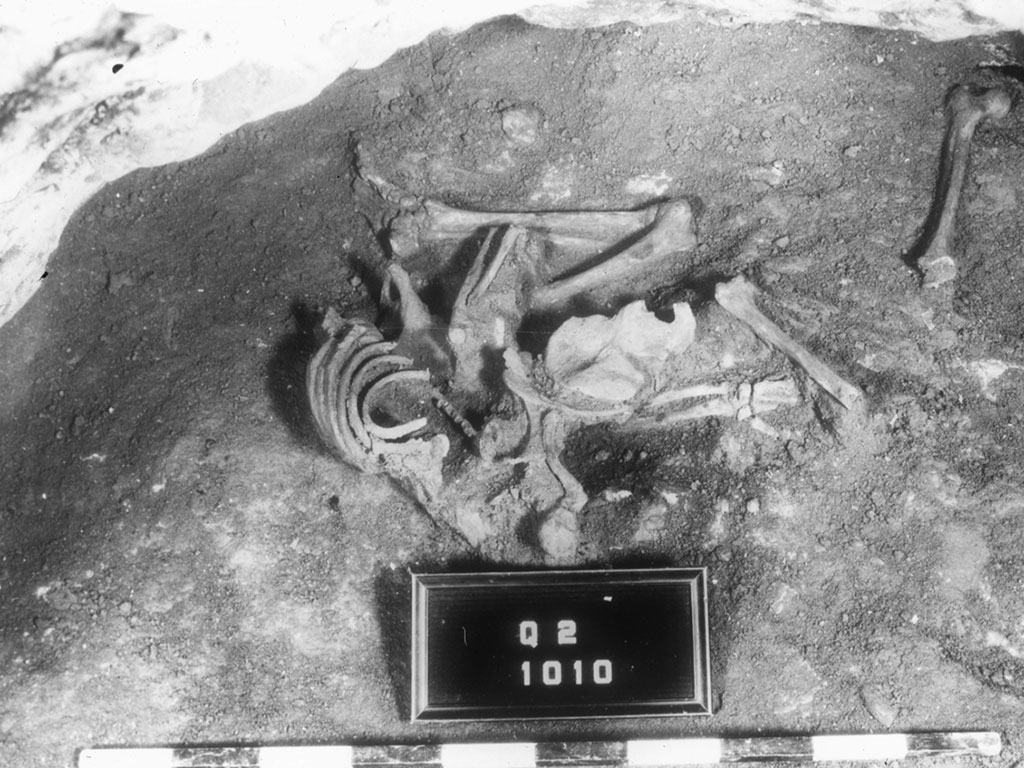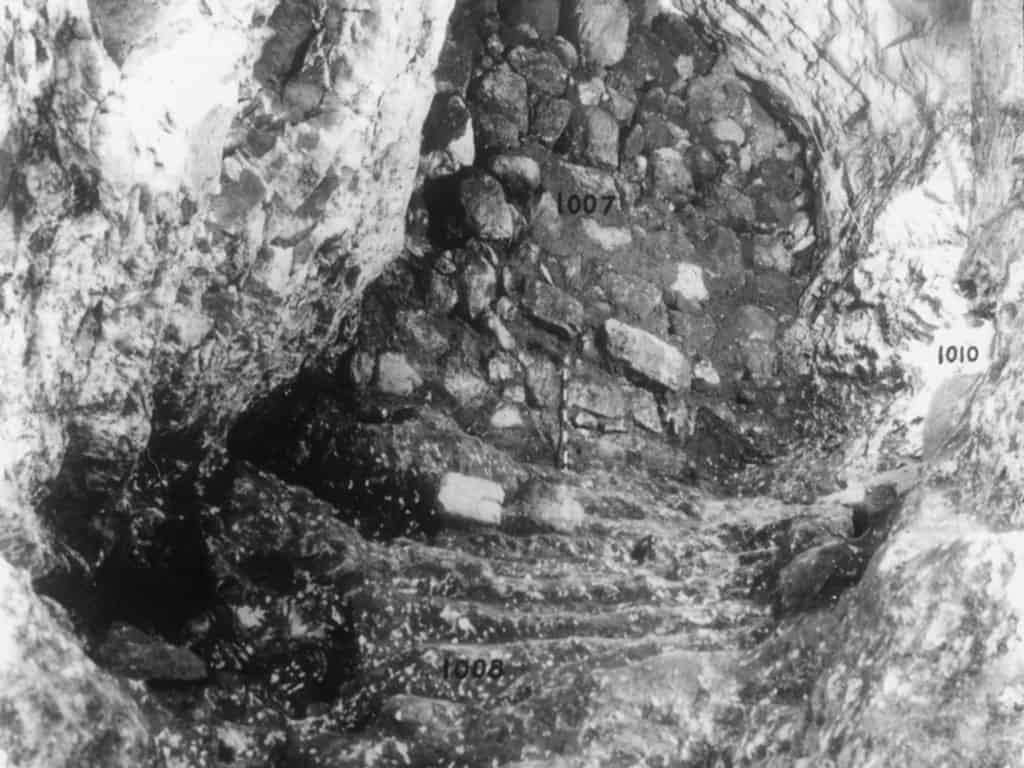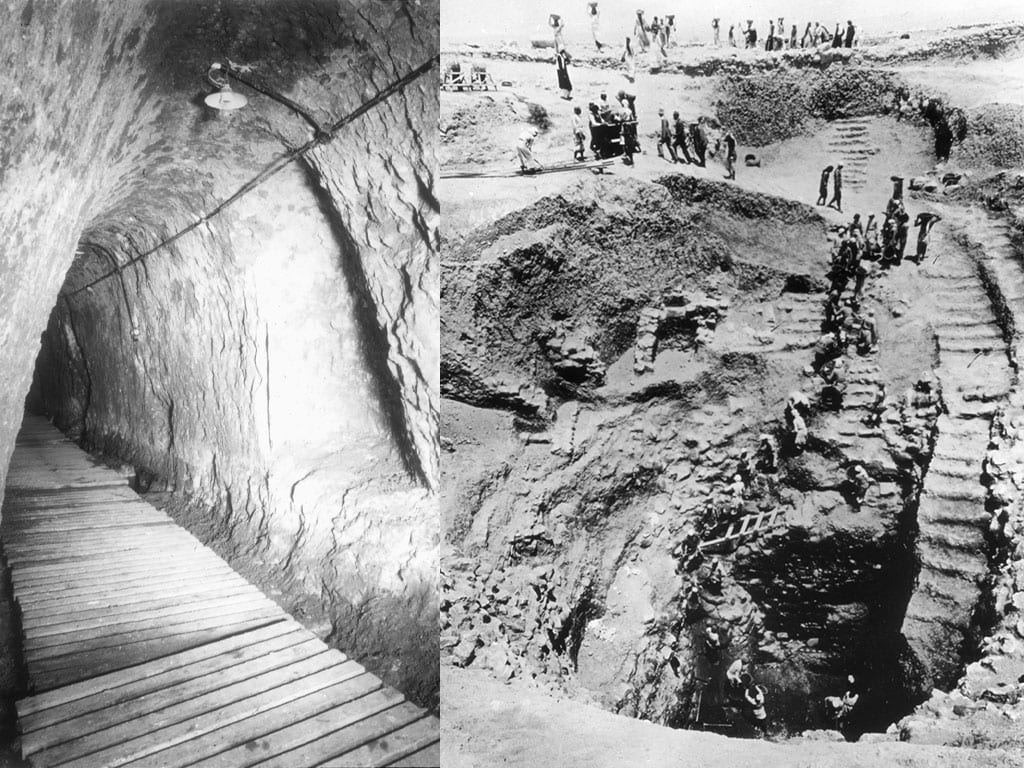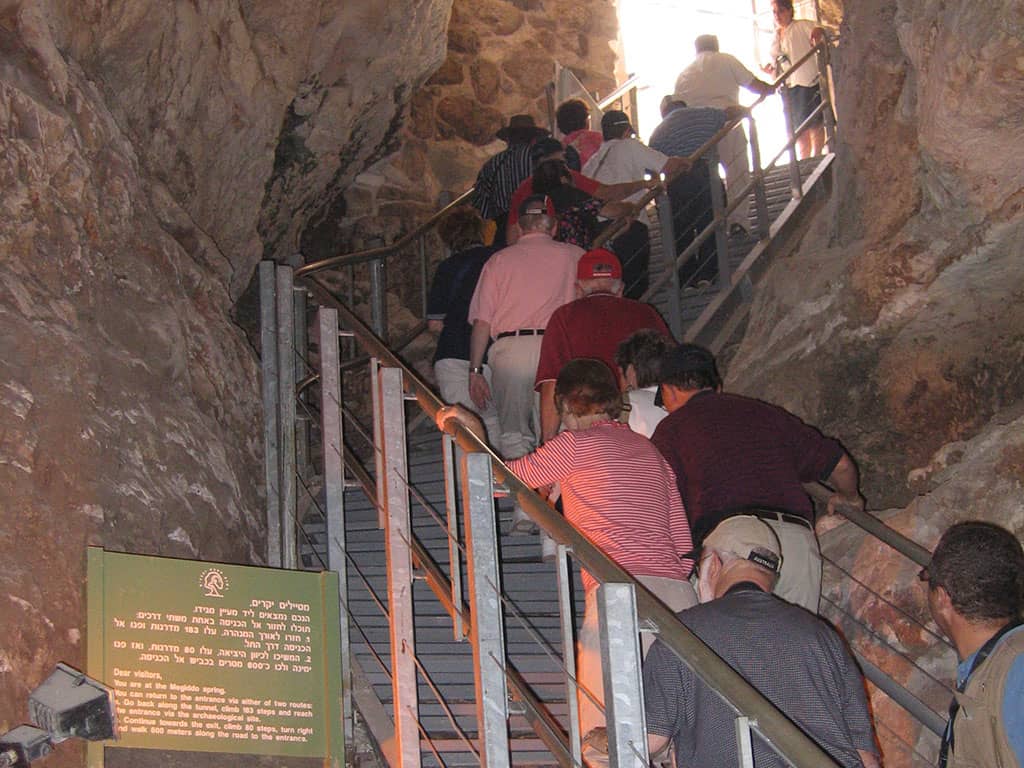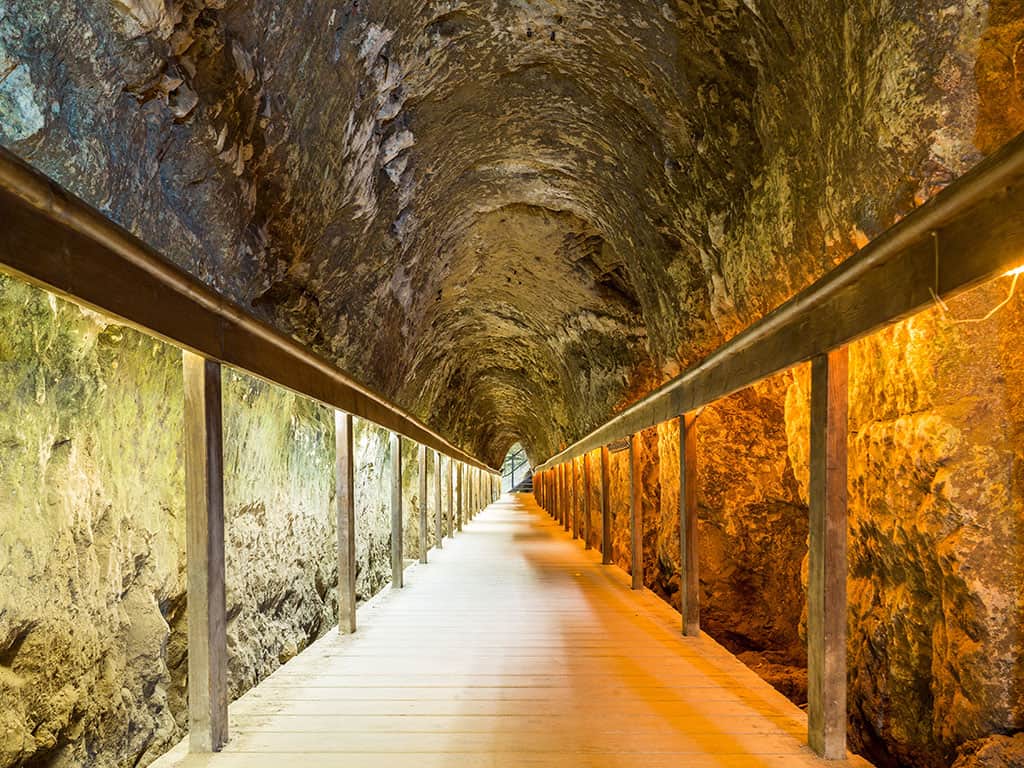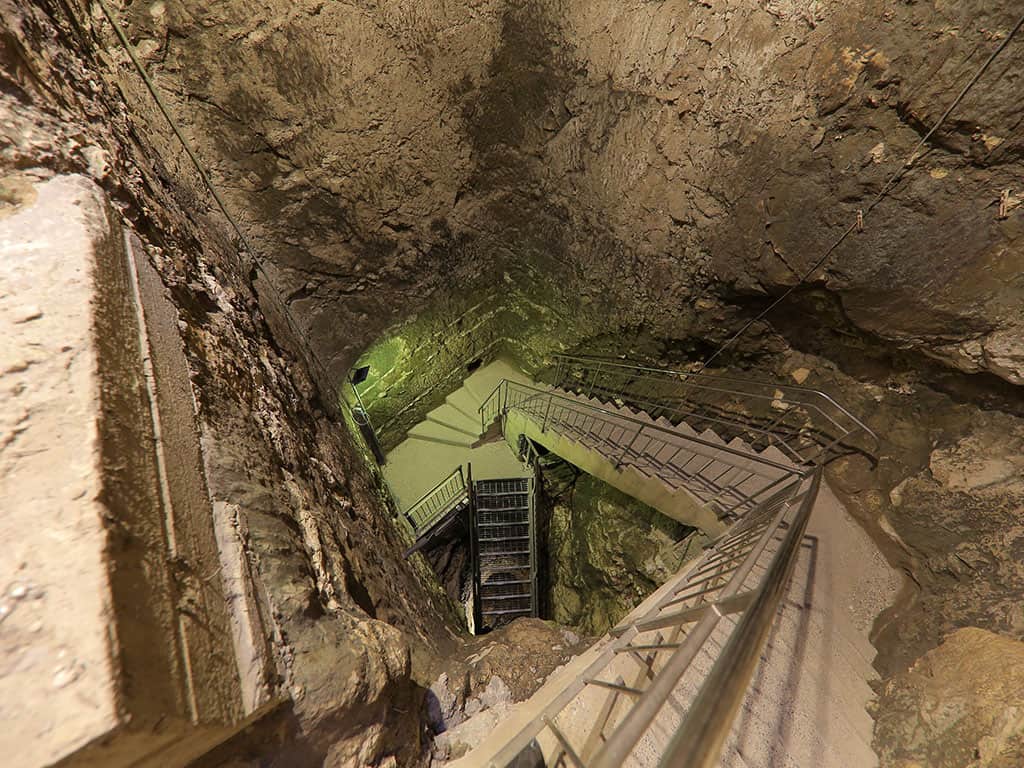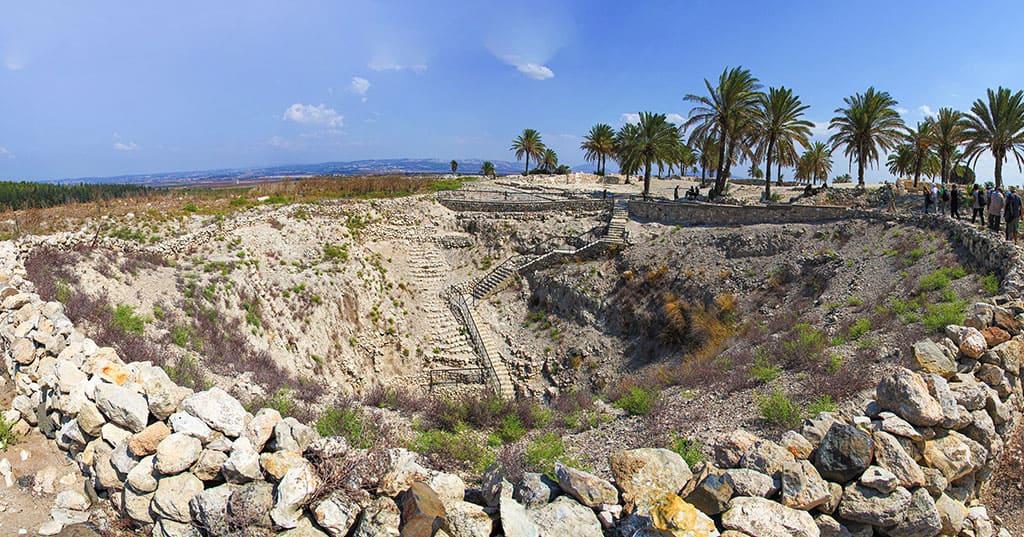
The most impressive of the ancient remains at Megiddo is the water system with its grand shaft and tunnel. The system was discovered by the Chicago Expedition in a complex dig that involved dozens of workers and the removal of massive amounts of earth. Once the system was cleared a concrete roof was built over the entrance to the shaft and steps were built to make it possible to descend to the tunnel.
Megiddo had two sources of water. Ein Megiddo (Ein el Kobi) in the east, and a second water source in the west. The second water source emanated from a cavern that over the years was deepened by the inhabitants of Megiddo to concentrate a larger flow of water. A series of steps was built leading down from the western side of the tel into the cavern and the water. Reaching the western water source from the tel entailed walking out of the gate in the north eastern part of the city and then around the northern walls to the spring. In the 9th century BCE, during the time of the Omrides, a stepped gallery which allowed access from the western side of the tel straight down to the entrance of the cavern was built.
The water system itself was built in the 8th century BCE during the time of Yoash and Jeroboam the Second. It involved digging an open pit through the ancient layers on the western side of the tel, all the way down to bedrock. Here a diagonal shaft was hewn in the rock, down what was presumed to be the water level – probably marked by a clay layer that caught the water seeping through the limestone rocks, the catchment area of the spring. Then a 52-meter long tunnel was hewn through the rock all the way to the spring. Finding the clay layer was a complex operation – but figuring out in what direction to dig was a more complex and difficult task.
Once the tunnel reached the spring a second stage was embarked upon. The tunnel was deepened and extended to the bottom of the outside pier, so that the water could flow from the spring along the tunnel to the area of the shaft, and from there it was drawn up into the city. Once this was completed the outside entrance to the spring was blocked so that the only access to the water was from inside the city.
The water level that collects in the pool of the spring fluctuates according to the amount of rainfall every year and during the rainy season. Even today after heavy rains the waters from the spring will flood the tunnel keeping it closed for weeks on end.
Use of the water system probably ceased with the Assyrian conquest. We don’t know exactly how this happened, but a gruesome find when the water system was unearthed may provide us with a clue. On the inside of the blocked up original entrance to the spring a skeleton was found – it may have been the soldier who was posted to guard the entrance and who died at his post.
